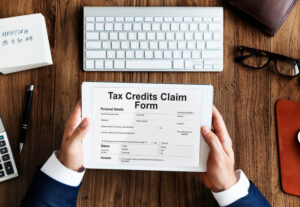What is Profit
And Loss Statement

An income statement, sometimes referred to as a profit and loss statement or P&L account, is an essential financial document that summarizes a business’s receipts, outlays, and earnings for a given time frame. For creditors and investors to evaluate a company’s historical performance and forecast its financial results, this statement is crucial.
What Makes a Profit and Loss Statement Structured?
Regarding the debit side:
- Gross Loss (from Trading Account)
- All Indirect Expenses
Regarding the credit side:
- Gross Profit (from Trading Account)
- All Indirect Revenues
Which parts make up the P&L Statement?
- Revenue/Sales: Total income from sales of goods or services.
- Cost of Goods Sold (COGS): Direct costs attributable to the production of goods sold.
- Gross Profit: Revenue minus COGS.
- Selling, General, and Administrative Expenses (SG&A): Overhead and operational costs.
- Depreciation: Reduction in value of assets over time.
- Interest Income/Expenses: Earnings or costs from interest-bearing assets and liabilities.
- Taxes: Government levies on profit.
- Net Profit/Income: Total earnings after all expenses and taxes.

How should a profit and loss statement be prepared?
- Prepare Ledger Accounts: Use a journal book to compile ledger closing balances.
- Create Trial Balance: Summarize all ledger accounts with their closing balances.
- Compile Profit and Loss Statement: Post ledger accounts for purchases, sales, direct and indirect expenses, and income.
What does a profit and loss account look like?
| Particulars | Amount | Particulars | Amount |
| To Opening Stock | XXX | By Sales | XXX |
| To Purchases | XXX | By Closing Stock | XXX |
| To Direct Expenses | XXX | ||
| To Gross Profit | XXX | ||
| To Operating Expenses | XXX | By Gross Profit | XXX |
| To Operating Profit | XXX | By Operating Profit | XXX |
| To Non-Operating Expenses | XXX | By Operating Profit | XXX |
| To Exceptional Items | XXX | ||
| To Finance Cost | XXX | ||
| To Depreciation | XXX | ||
| To Net Profit Before Tax | XXX |


INVEST MP Expression of Interest (EOI) For Inviting Online Tender…

Special Advance Authorization for Garments View Sample Report Directorate General…

Unutilized Input Tax Credit Refund Under GST View Sample Report An…

What is MSME Loan? View Sample Report Entrepreneurs and business owners…

ICICI Bank Business Loan View Sample Report ICICI Bank business loan…

PNB Bank Business Loan View Sample Report (Punjab National Bank) PNB Bank Business…



